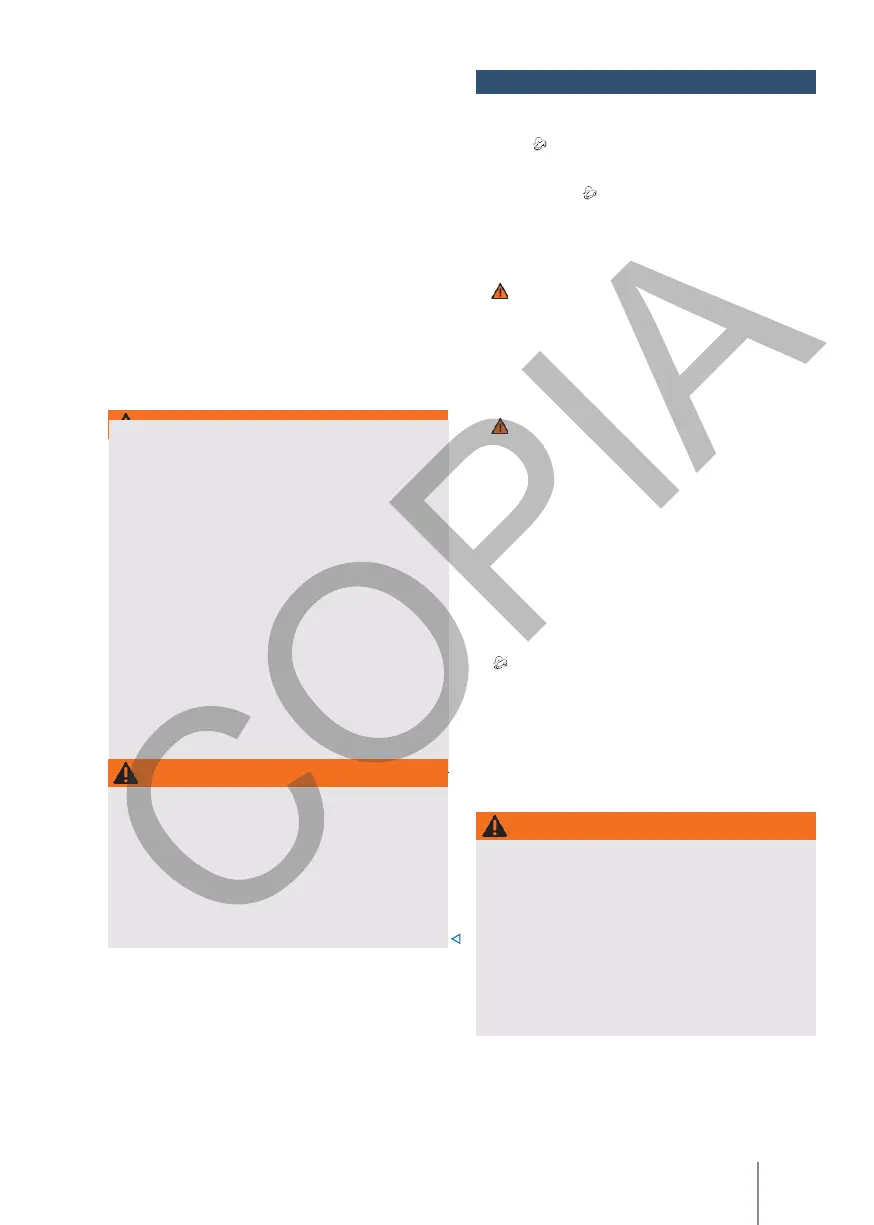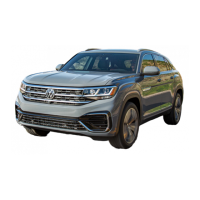—
Additionally if the cruise control (GRA) or
adaptive cruise control (ACC) is
switched
off
: if
the speed is lower than approx.
80 km/h (50 mph) or if the brake is applied.
—
Additionally, if the cruise control (GRA) or
adaptive cruise control (ACC) is activated
: if the
saved speed is exceeded.
The descent assistance function is
automatically
deactivated:
—
If the slope decreases.
—
OR: if the gearbox shifts up because the engine
speed is higher than approx. 4500 rpm.
—
Or additionally with
cruise
control
(GRA) or
adaptive cruise control
(ACC) active: if the
saved speed can be maintained.
Descent assistant
When the descent assistant is active, the
control
indicator
lights
green.
When the descent assistant is not active,
the
control indicator lights up in grey. The system
is
switched on, but is not regulating.
The hill descent assistant limits speed on steep
downhill gradients by automatically applying the
brakes on all four wheels, both forward and reverse
→ . As the anti-lock braking system remains
active, the wheels are prevented from locking.
After starting downhill at less than 30 km/h (19
mph), the speed is limited to a minimum of 2 km/h
(1 mph) and a maximum of 30 km/h (19 mph). The
driver may increase or reduce speed within the
above speed limits by accelerating or slowing down
→ if he/she feels it is necessary to do so.
However, it is essential that the surface ensures
sufficient grip. For this reason, the descent aid will
not be able to fulfil its function when, for example,
descending on slopes with icy or slippery surfaces.
The descent assistant intervenes automatically if the
following conditions are met:
—
The vehicle's engine is running.
—
Offroad driving profile is selected.
—
Driving at speeds below 30 km/h
(19 mph) (the instrument cluster display
shows ).
—
The slope inclination is at least 10 %.
—
It does not brake or accelerate.
The downhill assistant is deactivated if the vehicle
speed exceeds 30 km/h (19 mph), if braking or
acceleration occurs, or if the gradient is less than 5
%.
The intelligent technology of the descent assistant
cannot overcome the limits imposed by the laws
of physics and only works within the limits of the
system. The increased comfort provided by the
descent assist must never lead to any risk that
compromises safety.
•
Any accidental movement of the vehicle can
cause serious injury.
•
The descent assistant cannot replace the
driver's attention.
The intelligent technology of the descent assist
function cannot overcome the limits imposed by
the laws of physics and only works within the
limits of the system. Never allow the increased
comfort provided by this function to induce you
to take risks that compromise safety.
•
Any accidental movement of the vehicle can
cause serious injury.
•
The descent assistance function cannot
replace the driver's attention.
•
Always adapt your speed and driving style to
the visibility, weather, road and traffic
conditions.
•
The downhill assist function cannot always
hold the vehicle stationary on a hill or brake it
sufficiently downhill,
e.g. on slippery or frozen surfaces.
Always be prepared to brake. Failure to do so
could lead to accidents and injuries.
•
The descent assist function is only an
auxiliary function that cannot always
sufficiently fre- fy the vehicle when
descending a slope.
tooth.
•
The vehicle speed can be increased at a slower
rate than the speed of the vehicle.
The downhill assist function shall not be used.

